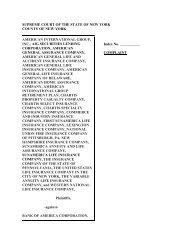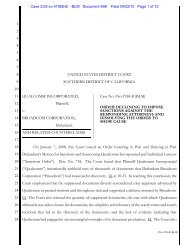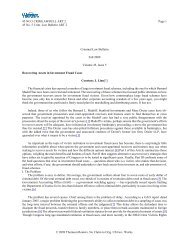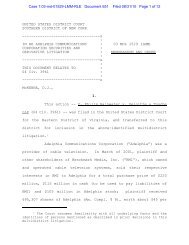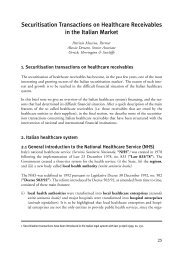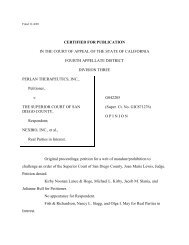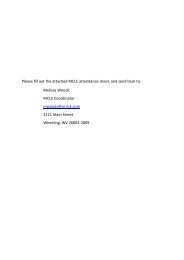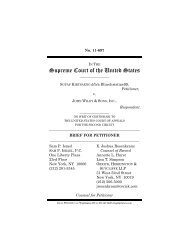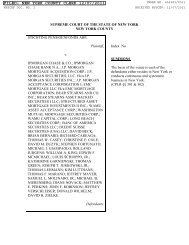Public Charter Schools Borrowing With Tax-Exempt Bonds, Second ...
Public Charter Schools Borrowing With Tax-Exempt Bonds, Second ...
Public Charter Schools Borrowing With Tax-Exempt Bonds, Second ...
You also want an ePaper? Increase the reach of your titles
YUMPU automatically turns print PDFs into web optimized ePapers that Google loves.
chapter four<br />
Eligible Uses of Bond Funds<br />
There are five eligible categories of expenditures of the proceeds of tax-exempt debt:<br />
(1) capital expenditures, (2) refinancing prior debt, (3) reimbursing prior capital<br />
expenditures, (4) working capital, and (5) financing costs such as costs of issuing the<br />
bonds, capitalized interest and reserves. A single bond issue may combine more than<br />
one or even all of these purposes. In addition, proceeds of tax-exempt bonds may<br />
be invested during the period prior to their expenditure for the above mentioned<br />
purposes, creating an opportunity for permissible arbitrage earnings.<br />
A. Capital Expenditure Projects<br />
The most common use of any debt is the acquisition or construction of a project—<br />
land, buildings, equipment and/or related infrastructure. The primary limitation<br />
on the types of projects that can be financed with tax-exempt bonds is that they<br />
must be owned by the nonprofit corporation (public charter school or CMO)<br />
or by a governmental entity. Such projects may not be used (i) in a manner that<br />
constitutes an unrelated trade or business under Section 513(a) of the Internal<br />
Revenue Code (which generally means that it be used in a manner consistent with<br />
the nonprofit purpose of the corporation) or (ii) in the trade or business of another<br />
person or entity (other than another 501(c)(3) corporation or governmental entity)<br />
(a “non-exempt person”).<br />
B. Refinancing Prior Debt<br />
Refinancing outstanding taxable debt, including construction financing, tax credit<br />
financing, bank loans and mortgages, is a very common use of tax-exempt bonds,<br />
particularly (but by no means exclusively) by first time users of tax-exempt debt.<br />
The primary limitation is that the proceeds of the prior debt were used for capital<br />
<strong>Public</strong> <strong>Charter</strong> <strong>Schools</strong> <strong>Borrowing</strong> <strong>With</strong> <strong>Tax</strong>-<strong>Exempt</strong> <strong>Bonds</strong>, <strong>Second</strong> Edition 15



